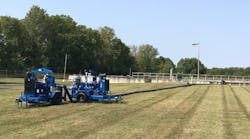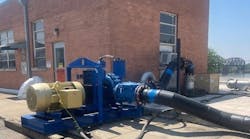Water shortages, increasing populations and more stringent environmental regulations have increased the cost of clean water and led to the reduction of usable water supplies. The need for more efficient water usage also increases the importance of pollution prevention, water recycling and water reuse. As communities approach the limits of their available water supplies to meet the needs of potable, agricultural, industrial and commercial consumers, water reclamation and reuse are becoming necessary to conserve and expand the diminishing supply.
In Florida’s most densely populated county, Pinellas County, water conservation and efficient water resource use is facilitated by the South Cross Bayou Water Reclamation Facility (WRF), a permitted advanced wastewater treatment facility (AWTF) that uses a tertiary treatment process to handle an average daily flow rate of 33 million gal per day (gpd). In Florida, advanced wastewater treatment standards require an effluent quality of no more than than 5 ppm for biological oxygen demand, 5 ppm for total suspended solids, 3 ppm for total nitrogen and 1 ppm for total phosphorus.
In an effort to meet required standards, the facility uses 12 9-ft, 8-in. wide by 85-ft long TETRA DeepBed filters with 6 ft of media each. The system also employs a TetraPace automatic dose control system and SpeedBump to conduct a complete system bump cycle without stopping flow to the reactors.
The wastewater treatment process is made up of four treatment stages:
1. Primary sedimentation, followed by anaerobic, anoxic and oxic zones;
2. Secondary sedimentation;
3. Tertiary filtration with nutrient removal and;
4. Disinfection treatment.
Wastewater to the South Cross Bayou WRF flows to a common headworks, traveling through suspended solids screens and teacups for grit removal before splitting into separate trains. Once separated, the streams pass through rectangular primary clarification, anaerobic and anoxic zones—stage one—followed by fine bubble diffusers and secondary clarification, stage two.
After secondary clarification, the streams are once again combined and then pumped to the 10,000 sq ft of filters in stage three. After denitrification, chlorination is injected to eliminate disease-causing organisms in the final stage. While the goal of the facility is to use 100% of the reclaimed water for irrigation purposes in the surrounding area, the advanced treatment enables wastewater to be released into a nearby creek when it otherwise could not be recycled for use. After disinfection, the stream is split for reuse, where it is stored in three 10-million-gal tanks or dechlorinated for flow that will be diverted to Joe’s Creek, which runs into the Gulf of Mexico.


